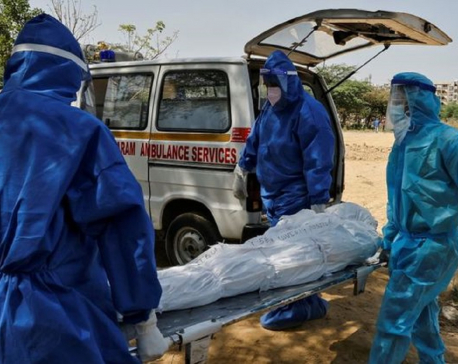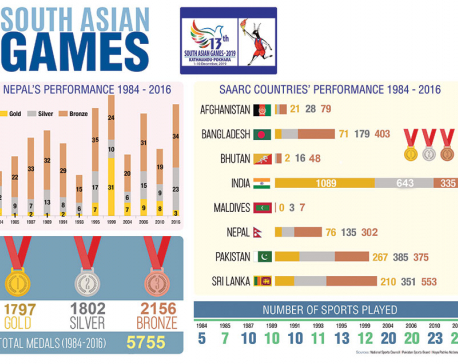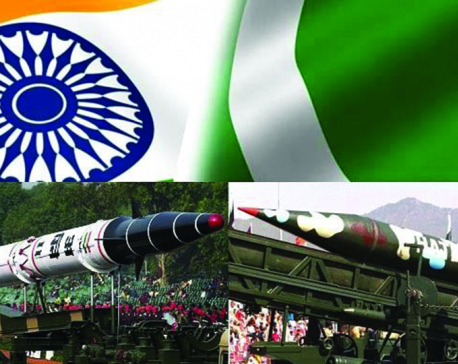
OR
World Bank says Nepal needs additional investment of $879 million for safer roads
Published On: February 22, 2020 10:21 AM NPT By: Republica | @RepublicaNepal
KATHMANDU, Feb 22: Nepal needs to invest an estimated additional $879 million in road safety over the next decade to halve its road crash fatalities, according to a new World Bank report.
The report 'Road Safety in South Asia: Opportunities for Shared Regional Initiatives' released on Thursday at the Third Global Ministerial Conference on Road Safety in Stockholm, points to the high death rate on the roads in the eastern sub-region—which comprises Bhutan, Bangladesh, India, and Nepal—caused by chronic lack of investment in systemic, targeted, and sustained road safety programs and identifies relevant investment priorities to reverse the trend.
In Nepal, road crash deaths and injuries have been on a sharp upward trajectory since the early 2000s with a fatality rate of 8.59 per 100,000 population in the fiscal year 2017/2018 as per official reports.
“Years of rapid economic growth in South Asia, followed by a steep rise in vehicle ownership have led to mounting traffic deaths and contributed to lost economic opportunities,” a statement issued by the World Bank quoted Hartwig Schafer, World Bank vice president for South Asia, as saying. “South Asia's road safety crisis is unacceptable but preventable. The good news is that the South Asian countries recognize the urgent need to protect their people, save lives, and sustain their journey toward greater prosperity. We at the World Bank stand ready to support their efforts.”
While urgent national-level actions in countries across the eastern sub-region, which accounts for the bulk of South Asia's population, vehicles, and road crash fatalities, remain a top priority, the report also calls for regional initiatives to make roads and vehicles safer.
The report emphasizes the need to focus on regional trade corridors where crashes are significant, and roads are unsafe. All categories of road users and vehicle types – animals, pedestrians, bicycles, rickshaws, motorcycles, motorized three-wheelers, cars, minibuses, buses, mini trucks, trucks, and agricultural vehicles – are represented in these corridors with narrow lanes, limited or no shoulders, and inadequate pedestrian facilities.
The road safety conditions on these regional corridors mirror the nature and scale of conditions prevalent on national highways. Crash data collected in a sample of highway sections across Nepal, India, and Bangladesh reveal alarming annual fatality rates ranging from 0.3 to three fatalities per kilometer, at a yearly average of 0.87 fatalities per kilometer.
To better monitor the effectiveness of road safety efforts, the report recommends a shared regional initiative to harmonize crash data management and analysis systems across South Asia.
You May Like This

South Asia surpasses grim milestone of 15 million COVID-19 cases
INDIA, April 11: Coronavirus infections in the South Asia sub-region surpassed the grim milestone of 15 million on Saturday, a... Read More...

A history of Nepal hosting South Asian Games
KATHMANDU, Nov 23: The South Asian Games (SAG), previously known as South Asian Federation Games is a biennial multi-sport event... Read More...

Under nuclear shadow
Unless Kashmir issue is amicably settled, South Asia will continue to remain under a looming shadow of nuclear war ... Read More...



Just In
- World Malaria Day: Foreign returnees more susceptible to the vector-borne disease
- MoEST seeks EC’s help in identifying teachers linked to political parties
- 70 community and national forests affected by fire in Parbat till Wednesday
- NEPSE loses 3.24 points, while daily turnover inclines to Rs 2.36 billion
- Pak Embassy awards scholarships to 180 Nepali students
- President Paudel approves mobilization of army personnel for by-elections security
- Bhajang and Ilam by-elections: 69 polling stations classified as ‘highly sensitive’
- Karnali CM Kandel secures vote of confidence















Leave A Comment